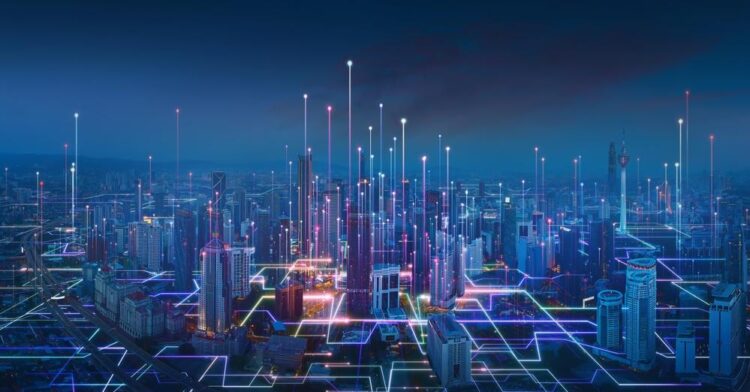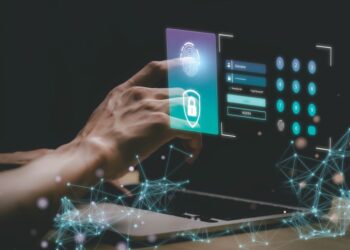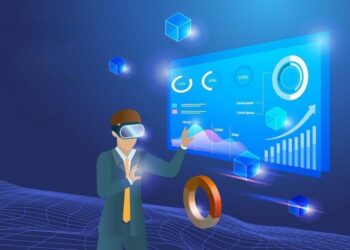As urban populations continue to grow, traditional infrastructure and governance models face increasing pressure. Cities worldwide are seeking innovative solutions to manage congestion, pollution, resource consumption, and citizen services. Enter smart cities—urban spaces powered by digital technologies that aim to enhance the quality of life, optimize city operations, and ensure sustainability. These cities rely on interconnected systems, Internet of Things (IoT) devices, data analytics, and cloud computing to transform urban living.
Smart cities are no longer a futuristic concept. From traffic management in Singapore to waste reduction in Amsterdam, digital solutions are being implemented globally to address complex urban challenges. This article explores how smart cities work, the core technologies behind them, their benefits and challenges, and what the future holds for intelligent urban infrastructure.
What Defines a Smart City?
A smart city is an urban area that uses digital technology and data-driven solutions to enhance the efficiency of services and meet the needs of its citizens. The core idea is to leverage data collected from people, devices, and infrastructure to optimize services and improve the overall urban experience.
Key Characteristics of Smart Cities
A. Connectivity: Integration of IoT sensors, Wi-Fi, and 5G networks enables real-time communication across various systems.
B. Data-Driven Governance: Policy decisions are increasingly based on analytics from real-time and historical data.
C. Sustainability: Renewable energy, waste management, and smart water systems reduce environmental impact.
D. Mobility Solutions: Intelligent transport systems and shared mobility platforms ensure smoother transit.
E. Citizen-Centric Services: E-governance platforms, digital ID systems, and real-time public feedback empower residents.
Core Technologies Driving Smart Cities
For a city to be smart, it must rely on a technological ecosystem that integrates various digital tools. The following technologies are the foundation:
A. Internet of Things (IoT)
IoT involves interconnected devices that gather and exchange data. These devices are embedded in streetlights, buildings, cars, and infrastructure.
Applications of IoT in Smart Cities:
-
Smart traffic lights adjusting in real time.
-
Air quality sensors providing public health alerts.
-
Smart bins that notify sanitation teams when full.
B. Artificial Intelligence (AI) and Machine Learning
AI enables predictive analysis and automation. In smart cities, AI is used to manage utilities, detect fraud, and even monitor crowd density.
C. Big Data and Analytics
The massive amount of data generated by sensors, citizens, and institutions needs to be processed and interpreted. Big data analytics allows city administrators to:
-
Identify traffic patterns.
-
Predict energy consumption.
-
Allocate emergency services more effectively.
D. Cloud Computing
Cloud platforms store and manage vast quantities of data, enabling scalability, cost-effectiveness, and secure collaboration across departments.
E. 5G and Advanced Networks
Faster connectivity ensures that millions of devices in a city can transmit data without lag, supporting real-time monitoring and services.
Benefits of Smart Cities
Smart city initiatives deliver multiple advantages across environmental, social, and economic dimensions.
A. Enhanced Quality of Life
Residents enjoy better air quality, shorter commute times, and easier access to healthcare, education, and city services.
B. Improved Public Safety
Smart surveillance systems, emergency alert services, and disaster response platforms contribute to safer communities.
C. Efficient Resource Management
Water and electricity are distributed more efficiently using automated systems that detect leakage or excessive usage.
D. Economic Development
Smart cities attract investment, startups, and talent by offering high-tech infrastructure and services.
E. Environmental Sustainability
-
Smart lighting reduces energy consumption.
-
Electric vehicle infrastructure cuts carbon emissions.
-
Green buildings and parks improve biodiversity.
Real-World Examples of Smart Cities
Let’s explore some pioneering cities that have successfully integrated smart technologies.
A. Singapore
Singapore’s Smart Nation initiative includes a national digital ID, autonomous vehicle testing, and smart housing developments.
B. Barcelona, Spain
Barcelona uses sensors for smart parking, waste collection, and air quality control. Citizens access services via a citywide mobile app.
C. Amsterdam, Netherlands
The city focuses on sustainability with smart grids, real-time traffic data, and green energy projects.
D. Dubai, UAE
Dubai is developing an entirely new blockchain-based city governance model and uses AI for policing and utility services.
E. Seoul, South Korea
Seoul’s Smart City platform allows residents to report issues in real time, access digital health records, and receive tailored emergency alerts.
Challenges in Implementing Smart Cities
Despite the benefits, several challenges hinder the full-scale implementation of smart cities.
A. High Implementation Costs
Building infrastructure like fiber optics, sensors, and data centers requires significant investment.
B. Data Privacy Concerns
Collecting personal and environmental data raises concerns about surveillance and misuse.
C. Interoperability Issues
Devices and platforms from different vendors may not communicate effectively, leading to data silos.
D. Digital Divide
Not all residents may have equal access to the internet or digital literacy, leading to exclusion.
E. Regulatory Hurdles
Existing laws may not cover new technologies, creating gaps in governance and enforcement.
Key Sectors Transformed by Smart City Technologies
Smart cities impact nearly every aspect of urban living. Here are some sectors significantly transformed:
A. Transportation
-
Real-time traffic management systems.
-
Smart parking guidance apps.
-
EV charging stations with dynamic pricing.
B. Healthcare
-
Remote patient monitoring.
-
AI-powered diagnostics in public clinics.
-
Emergency services integrated with GPS tracking.
C. Energy
-
Smart grids that manage supply and demand.
-
Solar panels with IoT-connected inverters.
-
Home automation systems to reduce electricity usage.
D. Waste Management
-
Sensor-based trash collection.
-
Recycling incentives via digital apps.
-
AI-based route optimization for garbage trucks.
E. Education
-
Smart classrooms with virtual reality tools.
-
Digital attendance and grading systems.
-
Public Wi-Fi zones for student access.
Future Trends in Smart Cities
As digital transformation accelerates, the future of smart cities looks increasingly promising.
A. Digital Twins
Cities will develop digital replicas to simulate infrastructure changes before implementation.
B. Autonomous Transport
Driverless buses, delivery robots, and drones will reshape urban mobility.
C. Blockchain Governance
Transparent and secure records will improve city administration and reduce fraud.
D. Sustainable Urban Farming
Vertical farms and smart irrigation systems will support food security in dense urban areas.
E. AI-Driven Urban Design
Urban planners will use AI to design more efficient and inclusive cities.
How Citizens Can Participate in Smart Cities
Smart cities thrive on citizen engagement and transparency.
Ways to Participate:
A. Download and use city apps for services and feedback.
B. Contribute to open data initiatives.
C. Join local digital literacy programs.
D. Adopt sustainable behaviors promoted by smart systems.
E. Vote and engage in smart governance projects.
Conclusion
Smart cities represent the future of sustainable, efficient, and citizen-friendly urban development. By harnessing technologies like IoT, AI, and big data, cities can evolve into intelligent ecosystems that respond to the dynamic needs of their residents. While challenges remain, collaboration among governments, private sectors, and citizens will pave the way for smarter, greener, and more inclusive urban environments.
As we move into a digitally connected future, the transformation of cities through technology is not just an option—it’s a necessity. The decisions made today will shape how billions live, work, and thrive tomorrow.














